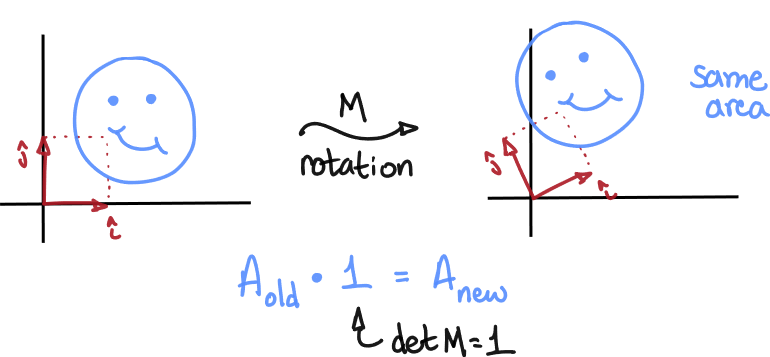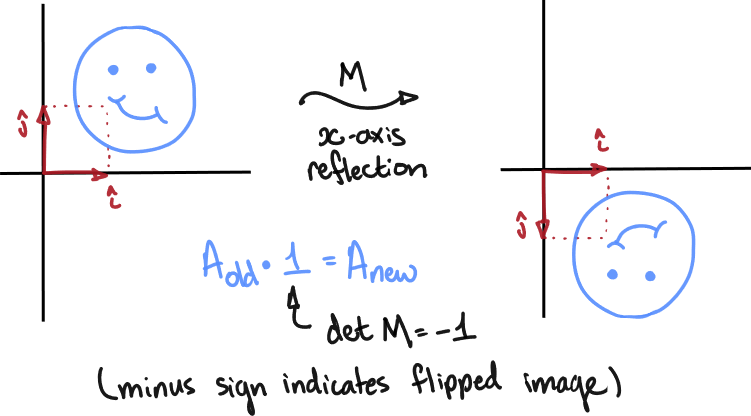This topic is sometimes not covered in precalculus classes. It is more often included as a part of a linear algebra class covered in college. That being said, determinants of matrices does frequently appear as an ACT topic.
Conceptual Definition
Conceptual Definition of a Determinant
The determinant of a square matrix is a measure of the factor by which area (for matrices), volume (for matrices), etc. change under the matrix’s associated linear transformation. If the image of the transformation is mirrored, then the determinant is defined to be negative. If the original square matrix is , then the determinant of that matrix is denoted by .
Example 1 - determinant of a rotation matrix
If is a matrix whose corresponding linear transformation is a rotation, then , since rotations preserve area and do not cause mirroring.
Example 2 - a negative determinant
If is a matrix whose corresponding linear transformation is a reflection across the -axis, then , since reflections preserve area but do cause mirroring.
Example 3
If is a matrix whose corresponding linear transformation causes scaling along the and directions by a factor of , then , since areas are increased by a factor of but the transformation does not cause mirroring.
Example 4
If is a matrix whose corresponding linear transformation causes scaling along the and directions by a factor of , then , since volumes are increased by a factor of but the transformation does not cause mirroring.
Computational Definition
matrices
Below, I am providing a formula that can be used to compute the determinant of any matrix.
Computational Definition of the Determinant of a Matrix
The determinant of a is given as follows.
This formula is simple enough and useful enough to be worth memorizing.
Let’s try using this formula to compute the determinants of the matrix described in some of the conceptual examples.
Example 1 (revisited)
Consider the matrix
whose corresponding 2D transformation is a counterclockwise rotation by The determinant of this matrix can then be computed as follows.
Example 2 (revsited)
Consider the matrix
whose corresponding 2D transformation is a reflection across the axis. The determinant of this matrix can then be computed as follows.
These results are consistent with what we saw in the conceptual definition section.
matrices
Content coming soon
Larger matrices
Content coming soon


